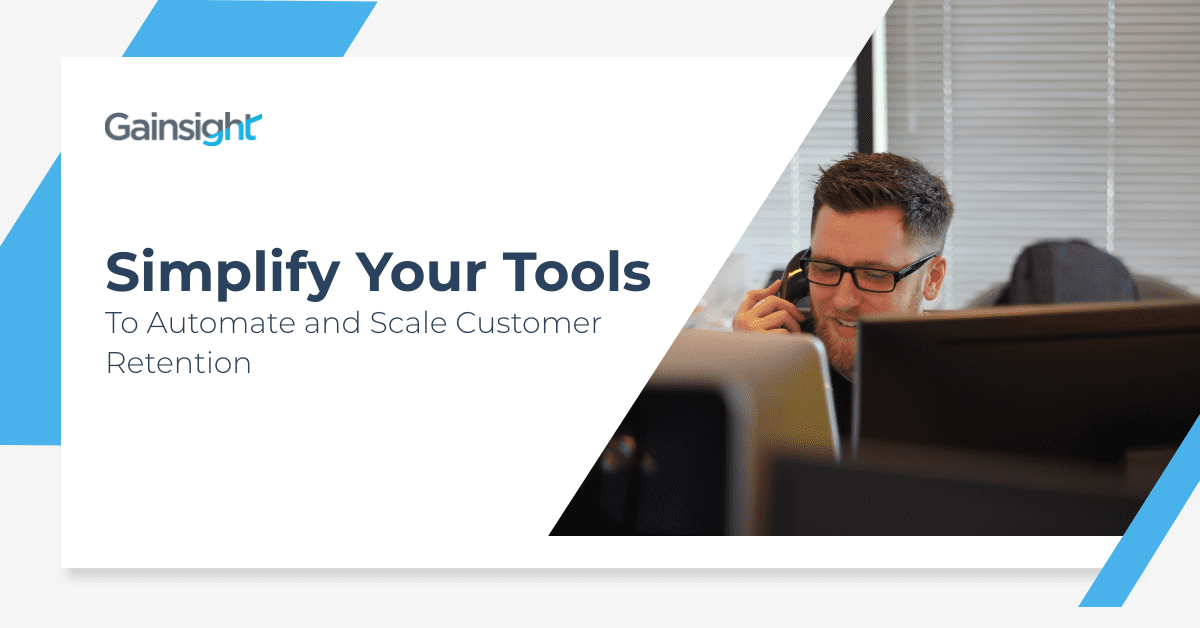A common concern for growth teams is how much budget they should spend on acquisition versus retention sales or marketing. Because the budget required for cross-channel tactics to acquire new customers is likely high, organizations usually have little budget remaining to spend on retention.
In fact, for organizations with a decent sized customer base, acquiring a new customer can cost five times more than retaining an existing customer. Simple churn prevention tactics can cost little to nothing because they target an existing base through owned and operated channels, making sense that more effort should be spent on retention. In fact, studies by Bain & Company, along with Earl Sasser of the Harvard Business School, have shown that even a 5% increase in customer retention can increase profits of between 25-95%.
So what metrics should you use to evaluate customer retention, and what are the tactics and customer success automation tools you can use to improve it?
Let’s start with retention rate, which is the percentage of customers a business retains (or the percentage of the total numbers of customers that continue with a service) over a given period. Retention rate is one of the most essential metrics when working in SaaS, and the easiest way to calculate it is as follows:
![]()
A high retention rate logically would show that a business has a low churn rate (the percentage of customers that discontinue your service over time)

Churn is a leading indicator of the overall health of your business. Failing to increase your retention rate actively and correspondingly decrease your churn rate can mean a swift and painful death for your company.
Fortunately, there are many tactics and tools to help identify and prevent churn, including software like Gainsight CS, which identifies and addresses retention metrics that need improvement. Gainsight CS allows you to create scorecards that use customer health as an early warning system and drive targeted playbooks with automated outreach when changes occur.
You can also identify high-risk clients by using Gainsight RO to:
- Confidently manage and forecast renewals with all of your customer data conveniently located in Renewal Center
- Leverage in-product data science to effectively determine the likelihood of a customer’s renewal
- Maximize efficiency with Reports & Dashboards that keep your teams, processes, and systems aligned
Gainsight CS even helps you intercept customers who are about to leave. It allows you to accurately predict customer churn and take proactive steps to address problems at scale so you can:
- Mitigate risks at scale without needing extra headcount with automated programs in Journey Orchestrator
- Deliver more value and increase product stickiness with targeted In-App Engagements directing customers to new, useful features and enhancements
- Create cross-functional alignment for teams like Customer Success, Sales, Support, and even executives to stay focused on customer risk
One important thing to note is that things get more complicated when you bring revenue into the picture, especially if you have varying service levels with different volumes of subscribers and revenue. To figure out your revenue churn, you’ll need to know your monthly recurring revenue (MRR). The Essential Guide to Reduce Churn goes into depth on the difference between customer churn and revenue churn.
Another thing to note is that it’s important to distinguish between those customers who leave you by choice and those who leave by force. Involuntary churn occurs when customers discontinue service due to factors beyond your control (e.g., they go out of business or their business pivots away from needing your solution). Typically, you wouldn’t count such losses toward your customer retention rate.
Voluntary churn is where you should be focusing the majority of your attention. These are customers who make a conscious decision to discontinue their use of your products and services. Understanding the factors that influence those decisions is the key to preventing future losses. Taking a proactive approach to identifying at-risk customers before the loss actually occurs— by implementing predictive processes and using technology like Gainsight CS— allows you to identify and deploy customer prevention tactics at scale quickly. Schedule a personalized demo of Gainsight CS to see how you can identify and mitigate churn.
